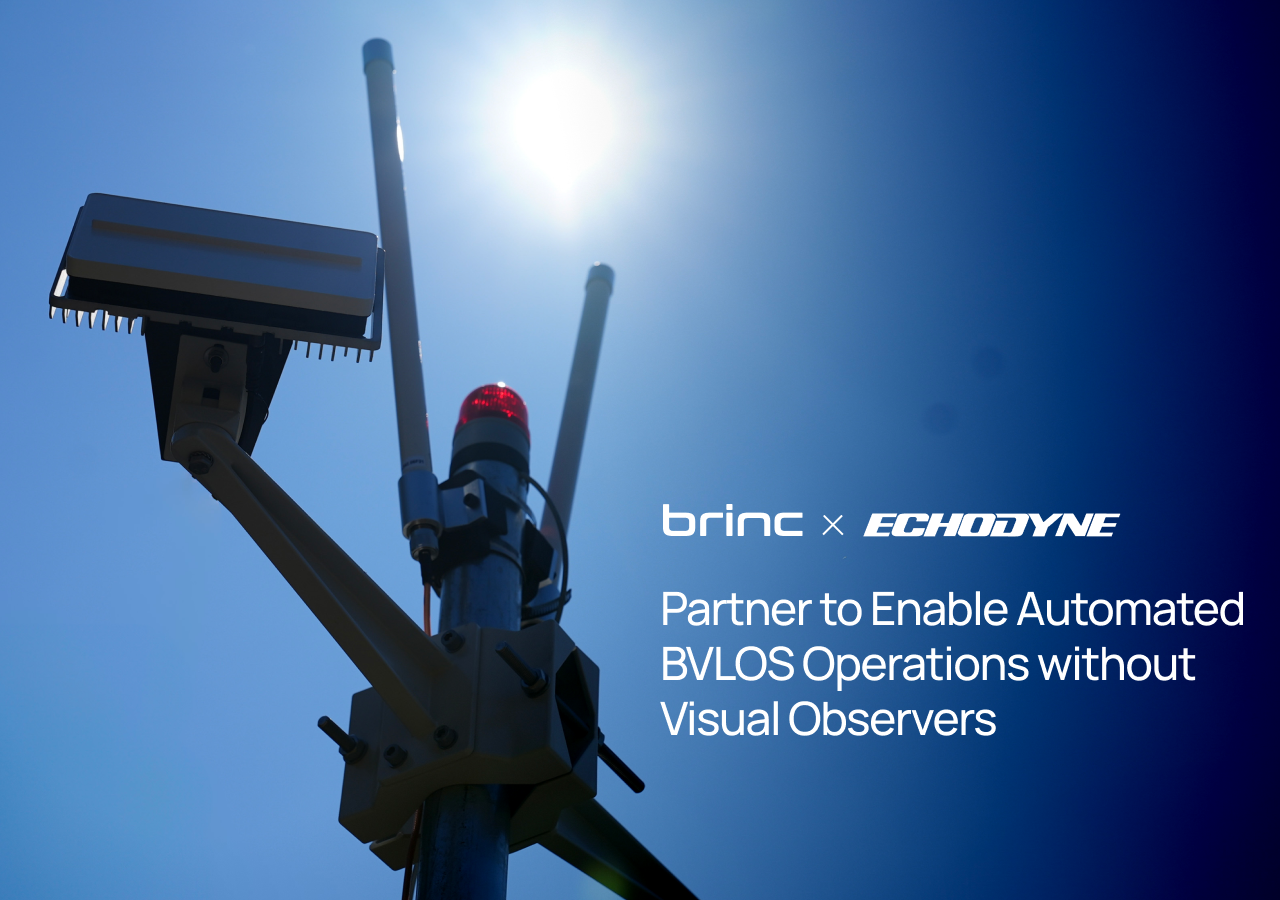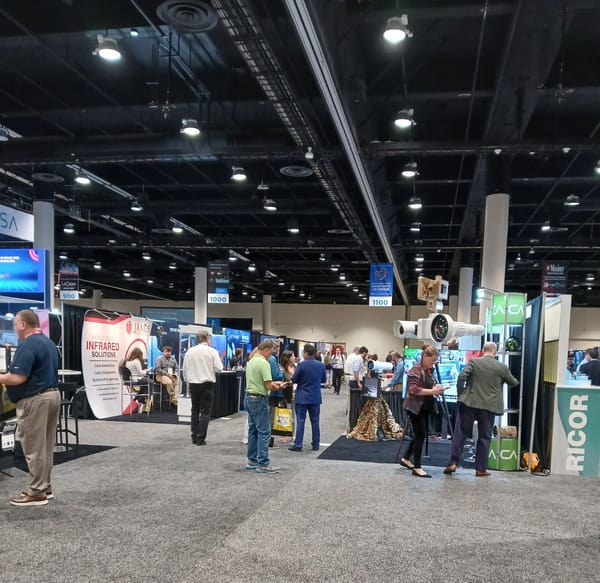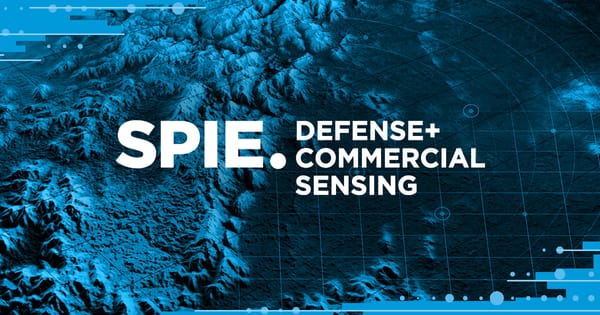BRINC and Echodyne to Enable Automated BVLOS Operations without Visual Observers for First Responders

The partnership will integrate BRINC’s cutting-edge Drone as First Responder (DFR) solution with Echodyne’s ground-based radars to enable a path toward Beyond Visual Line of Site operations without Visual Observers.
BRINC, a pioneer in drone technology for first responders, is proud to announce a partnership with Echodyne, a leader in ground-based radar systems. This collaboration will integrate Echodyne's advanced MESA® radar technology into BRINC's purpose-built Drone as First Responder (DFR) solution. The strategic relationship enables a path toward beyond-visual line of sight (BVLOS) operations without visual observers, advanced airspace awareness for safer operations, and lowers the barrier to entry for public safety agencies looking to start or expand DFR programs.
Drone as First Responder (DFR) systems significantly lower emergency response times and enable more informed decision-making for first responders. Current FAA regulations require a visual observer onsite for drone operations to monitor flights. The onsite visual observer rule limits drones' flexibility and operating times for emergency response operations. More importantly, it adds an extra staffing burden when public safety agencies across America are understaffed. As evidence of the staffing shortage, the Police Executive Research Forum’s 2023 study on police staffing found that police resignations have increased over the last 4 years, alongside a 5% decrease in sworn-in officers over the same period.
DFR requires extended range and operation in obstructed environments and inclement weather. Beyond Visual Line of Sight (BVLOS) waivers are essential for successful DFR implementation. The partnership with Echodyne will add a layer of safety and reliability while providing a path for BRINC’s customers to meet the stringent Federal Aviation Administration (FAA) requirements for BVLOS operations without a visual observer.
“By combining BRINC’s drone technology with Echodyne’s advanced radar, we are creating a safe, robust, and reliable solution for first responders to deploy 911 response drones autonomously to emergencies,” said Blake Resnick, BRINC CEO.
Echodyne’s radar systems offer continuous monitoring and real-time data on the drone's surrounding environment, including the location of other aircraft, obstacles, and dynamic changes that can occur at a moment's notice.
“Echodyne radars have been used for years by UAS centers of excellence, as well as FAA and NASA testing programs,” said Eben Frankenberg, Echodyne CEO. “DFR represents a unique opportunity to introduce widescale BVLOS operations, and radars are the ideal sensor to provide detailed and accurate airspace situational awareness.”
As part of BRINC’s comprehensive DFR offering, BRINC Integrates Echodyne’s hardware to send radar readings to an agency’s connected LiveOps account. From LiveOps, agencies can simultaneously view their drone operations, ADS-B data, airspace advisories, weather conditions, and radar data. The Echodyne addition provides a comprehensive, all-in-one view of the surrounding airspace, enabling automated LiveOps triggers to inform pilots of potential dangers. It also enables the automated grounding or rerouting of drones to avoid air traffic.
Interested agencies can work with BRINC to spread the costs of the solution over multi-year contracts, making DFR technology more accessible.




